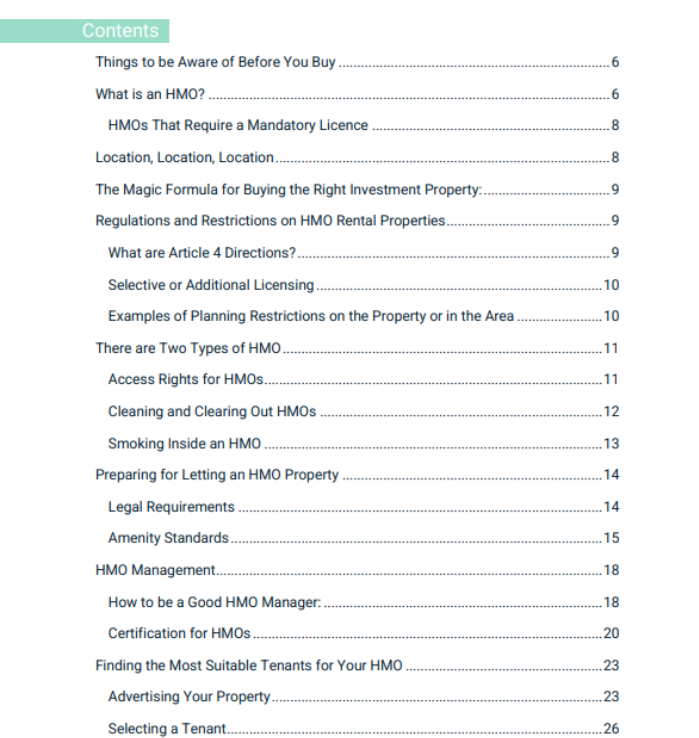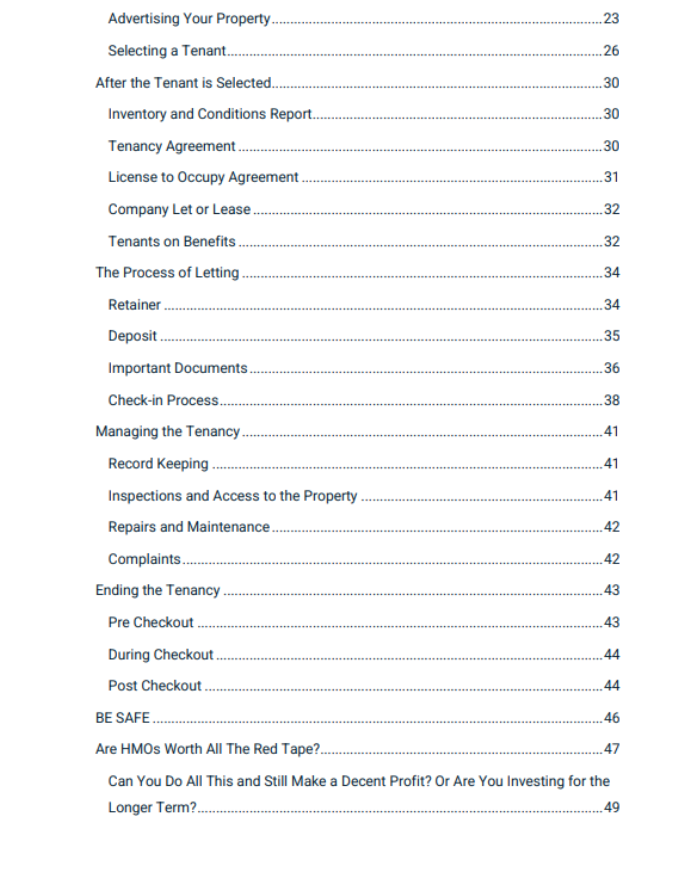
Mary Latham has been renting out property since 1972. Over the years she has developed a wealth of knowledge to help her build her business and succeed as an HMO landlord.
Mary has written the ultimate guide for success as an HMO landlord. She covers everything from room size requirements to how to handle HMO property management once tenants are situated. This blog post shares some snippets of Mary’s free guide to show how invaluable her advice is before you download it and see for yourself.
What is an House in Multiple Occupation?
Otherwise known as an HMO, an House in Multiple Occupation can look like either of the following:
- A house with at least 3 tenants living in your property, forming more than one household. These tenants will share a toilet, bathroom or kitchen facilities.
- A house with at least 5 tenants, forming more than 1 household. These tenants will also share a toilet, bathroom or kitchen facilities. This would be classed as a large HMO property.
A household is either a single person or members of the same family who live together. For more information on what one household looks like, check out the information provided on Gov.uk.
What is an HMO License?

Some HMO properties need to have a license approved by the council. Having an HMO license means your property meets the requirements to be legally rented out as a House in Multiple Occupation. Licensing is meant to improve housing standards, including the health and safety of tenants, and remove rogue landlords from the market. The landlord pays a fee to the council to get their license.
HMO license rules in England and Wales are ever changing. Large HMOs must be licensed. Smaller HMO properties might need a license depending on the rules set by the local council so it’s always best to check with them first.
For further licensing information, including information about selective and additional licensing, read the ultimate HMO Guide for success.
Finding the Most Suitable Tenants for Your HMO
It’s not uncommon for landlords to end up with unsuitable tenants in their rental properties. There is no magic formula for finding the right tenant, but it is important to screen potential tenants thoroughly. Offering a property catered for your target tenant at a rent they can afford is the best way to attract your desired tenant type.
Screening tenants will lower the risk of housing a tenant who historically doesn’t pay their rent or has been a troublesome tenant previously. It is not worth taking a risk on a tenant just to fill an empty room because if there was ever a need to evict them, the process is expensive, stressful, and time-consuming and can also lead to losing other reliable tenants while it’s going on.
There are Two Types of HMO
Category A: Individual tenants rent a room and share other facilities.
Category B: Whole property let to a group of unrelated sharers.
Our legal rights and responsibilities are different for each:
Access Rights for HMOs
Type A.
Access is only restricted to an individual’s room, all shared areas are open access for the landlord or an agent or contractor acting on our behalf. It’s good practice to let tenants know when to expect someone, like a cleaner, but not a legal requirement unless you need to access their rooms.
Type B.
Find out access rights for type B HMOs in Mary’s free guide.
Cleaning and Clearing Out HMOs
Type A.
Landlords have a legal obligation to keep shared areas, particularly the fire exit route, clean and clear and to keep shared facilities in clean and good working order. They must also ensure that all fire safety equipment is in working order throughout the tenancy.
Type B.
Landlords have no legal responsibility to clean and clear the shared areas nor the tenants’ rooms, but they do have a responsibility to ensure that the fire exit route is not blocked by tenants and that all fire safety equipment is in working order throughout the tenancy.
There have been instances where tenants have removed or covered smoke alarms and heat detectors or fixed open fire doors. If this happens, it is important to talk to your tenant and give them verbal instructions not to do this. Then follow up and confirm this by email to create written proof that you have done everything you can.
There is also the option to ask the local Fire Safety Officer to pay them a visit, and they will do this because a big part of their remit is the prevention of fires.
How to be a Good HMO Manager – Introduction
Protect those who work for you, for example, a hired cleaner or any other member of staff/contractor. Protect tenants who are victims of bad behaviour from other tenants. Don’t discuss one tenant with another unless you are listening to a complaint. When listening to a complaint, you should take note of everything but not comment at that time and don’t take sides at any point.
Involve outside agencies if you need support – social services, police, environmental health officers, or the fire service.
Don’t get involved in private tenant issues unless they begin to impact the house.
We’ve chosen to share these snippets from the free HMO Guide to showcase the invaluable advice that Mary has kindly shared with us. To see the full guide you can download it here.

Still not convinced? Here’s a rundown of all the content included in the guide:





